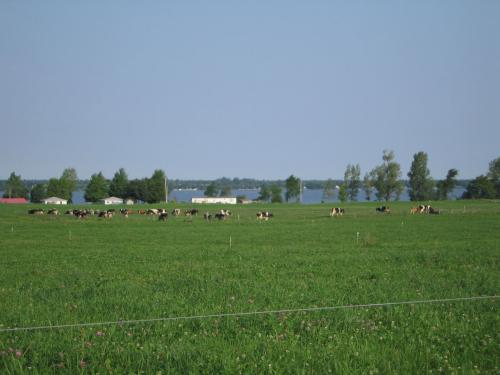eOrganic authors:
Sarah Flack, Sarah Flack Consulting
Mike Gamroth, Oregon State University
Pasture or grazing management is a science and technique that dairy farmers can use to produce high-quality forage while keeping milk production costs low. Learning how to effectively manage pastures involves understanding how pasture plants grow, and how dairy cows use them to produce milk.
When farmers understand how pasture growth interacts with cattle grazing, they can plan efficient systems to manage grazing to improve overall farm viability. Efficient grazing practices can make the farm more profitable in several ways:
- reduce purchased grain costs
- reduce mechanical forage harvesting and associated fossil fuel costs
- reduce mechanical manure spreading costs
- lower fertilizer costs as manure nutrients are returned to the soil

Cows grazing. Photo credit: Amanda Gervais, University of Vermont.
Managed pasture can provide inexpensive and ample nutrients for plant growth. The pasture plant consists three parts:
- roots which draw nutrients from the soil for growth and photosynthesis and provide nutrient storage for the plant
- leaves which catch sunlight for photosynthesis of carbohydrates and the conversion of nitrogen into protein
- the stem and seed head which allow the plant to reproduce
It is natural for a grass plant to grow rapidly in the spring and produce seed in early summer. However, as plants mature and begin to form seed, the content and digestibility of nutrients and intake potential decreases. Therefore, managing pastures so they remain in leafy, vegetative growth is ideal for optimum animal performance. For more information, see Pasture Plant Growth and Development on Organic Dairy Farms.
Improved grazing management that keeps pasture plants in the vegetative stage will help you get the most from pasture and animal productivity. Concentrated feed costs are lower in a balanced diet utilizing abundant, high-quality pasture as a major source of forage.



